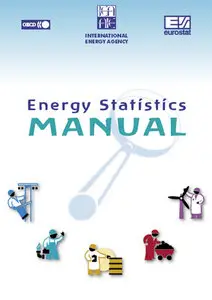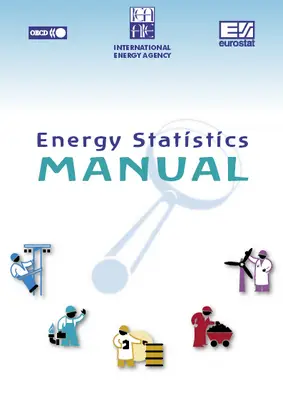Energy Statistics Manual
OECD/IEA | 2010 | ISBN: n/a | 196 pages | PDF | 2 MB
OECD/IEA | 2010 | ISBN: n/a | 196 pages | PDF | 2 MB
Detailed, complete, timely and reliable statistics are essential to monitor the energy situation at a country level as well as at an international level. Energy statistics on supply, trade, stocks, transformation and demand are indeed the basis for any sound energy policy decision.
The current Manual can be used by energy statisticians and analysts of all countries, it will soon be complemented by a more general energy statistics guide which should be seen as a first step towards a worldwide harmonisation of energy statistics.
Contents
Foreword
Acknowledgements
Introduction
1 Fundamentals
1. Introduction
2. What do People Mean by “Fuels” and “Energy”?
3. What are Primary and Secondary Energy Commodities?
4. What are Fossil Fuels and Renewable Energy Forms?
5. How to Measure Quantities and Heating Values?
6. What is the Difference between Gross and Net Calorific Values?
7. What is a “Commodity Flow”?
8. What are the Main Flows Considered in Energy Statistics?
9. How are Energy Data Presented?
2 Electricity and Heat
1. What are Electricity and Heat?
2. What Units are Used to Express Electricity and Heat?
3. How to Make the Conversion from Volume and Mass to Energy?
4. Electricity and Heat Flows
5. Electricity and Heat Supply
6. Electricity and Heat Consumption
7. Additional Requirements for the Joint Questionnaire on Electricity and Heat
3 Natural Gas
1. What is Natural Gas?
2. What Units are Used to Express Natural Gas?
3. How to Make the Conversion from Volume to Energy?
4. Natural Gas Flows
5. Natural Gas Supply
6. Natural Gas Consumption
7. Additional Requirements for the Joint Questionnaire on Natural Gas
Oil
1. What is Oil?
2. What Units are Used to Express Oil?
3. How to Make the Conversion from Volume to Mass?
4. Oil Flows
5. Oil Supply
6. Oil Consumption
7. Additional Requirements for the Joint Questionnaire on Oil
5 Solid Fossil Fuels and Manufactured Gases
1. What Are Solid Fossil Fuels and Manufactured Gases?
2. What Units are Used to Express Solid Fossil Fuels and Manufactured Gases?
3. How to Make the Conversion from Mass and Volume to Energy?
4. Coal Flows
5. Coal Supply
6. Coal Consumption
7. Additional Requirements for the Joint Questionnaire on Coal
6 Renewables and Waste
1. What are Renewables and Waste?
2. What Units are Used to Express Renewables and Waste?
3. How to Make the Conversion from Volume and Mass to Energy?
4. Renewables and Waste Flows
5. Renewables and Waste Supply
6. Renewables and Waste Consumption
7. Additional Requirements for the Joint Questionnaire on Renewables and Waste
7 Energy Balances
1. Why Make Balances?
2. Commodity Balances
3. Energy Balances
4. Differences between the Energy Balances of Eurostat and the IEA
Annexes
Annex 1: Fuel Conversion and Energy Production Processes
1. Electricity and Heat Generation
2. Petroleum Product Manufacture
3. Manufacture of Coal-derived Fuels
4. Natural Gas
Annex 2: Fuel Characteristics
1. Solid Fossil Fuels and Derived Gases
2. Crude Oil and Products
3. Natural Gas
4. Biofuels
Annex 3: Units and Conversion Equivalents
1. Introduction
2. Units and their Interrelationships
3. Decimal System Prefixes
4. Conversion Equivalents
5. Typical Calorific Values
G Glossary
1. Definitions of Fuels
2. List of Abbreviations
with TOC BookMarkLinks



